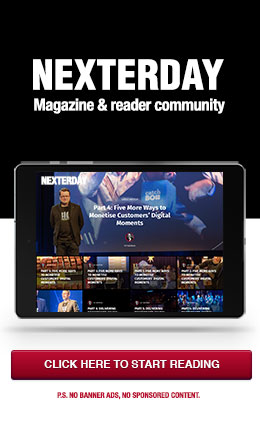Management World 2012: The Importance of Dynamicity for Innovation
Posted: May 25th, 2012 | Author: Steve Hateley | Filed under: Events | Tags: billing, business, charging, CIQ4T, contextual intelligence, customer, innovation, Management World 2012, TM Forum, TNO Information & Communication Technology | 2 Comments »While the weather remained unexpectedly warm here in Dublin, the conversations at Management World 2012 also heated up this week. Like Keith Willetts discussed in his keynote session, dealing with competition from over-the-top (OTT) players, combating churn and managing revenue growth were big areas of focus at TM Forum’s annual flagship conference. I had the pleasure of sitting in on a session that touched upon these industry challenges and really reinforced the overall theme of innovation.
Henk Ensing, technical consultant for TNO Information & Communication Technology, a Dutch institute for applied science that specialises in helping companies innovate, covered the potential for dynamic billing and why communications service providers (CSPs) need to inject some new thinking into their charging concepts and business processes. He highlighted that the key elements to dynamicity were analysing transaction-based usage, applying intelligent business rules and considering the contextual status of individual customers. Coincidentally, these were the main attributes for Comptel’s own Contextual Intelligence for Telco (CIQ4T) perspective.
Henk went on to state that dynamic billing brings the element of customer trust to a new level and illustrated this with an analogy comparing CSPs to fresh produce market merchants. Many people have a regular routine of going to the market on the weekend, generally stopping by their favorite vendors for particular foods. The vendors, in turn, are familiarised with their customers’ preferences and can tailor the products they sell accordingly or make recommendations on complimentary additional products based on their extensive experience with the produce—further strengthening their interactions. The vendors, however, don’t always have fixed prices on their produce, which may vary depending on factors like the season and supply. Yet, what keeps the customers coming back? It’s the relationships the vendors are building and nurturing.
Similarly, dynamic billing is based on strong customer relationships where each transaction is a unique opportunity to create a positive end-user experience. Taking into account the context of and appropriately targeting each individual customer interaction is key though. For example, CSPs should consider where the customer is in his or her lifecycle and what products will fit his or her specific needs and wants, at an appropriate time that adds true value.
Policies that govern charging and the network have an important role to play in understanding and implementing this dynamic ability. According to Henk, the beauty of dynamicity is that these policies can be changed in real time based on customers’ evolving requirements. Say, if someone gets paid every two weeks, he or she can opt to make a payment during that time and customise it depending on his or her personal preferences.
Henk’s thoughts on dynamic billing and charging concepts fit in nicely with the discussions at Management World 2012 and reflected Comptel’s own thinking on how CSP innovation needs to evolve. Analysing customer behaviour is just one step of the process, but intelligently determining their contexts to make interactions more relevant and personalised will significantly result in a high quality of experience and improve CSPs’ bottom lines. Ultimately, it’s about strengthening loyalty through a focus on relationship enhancement.





